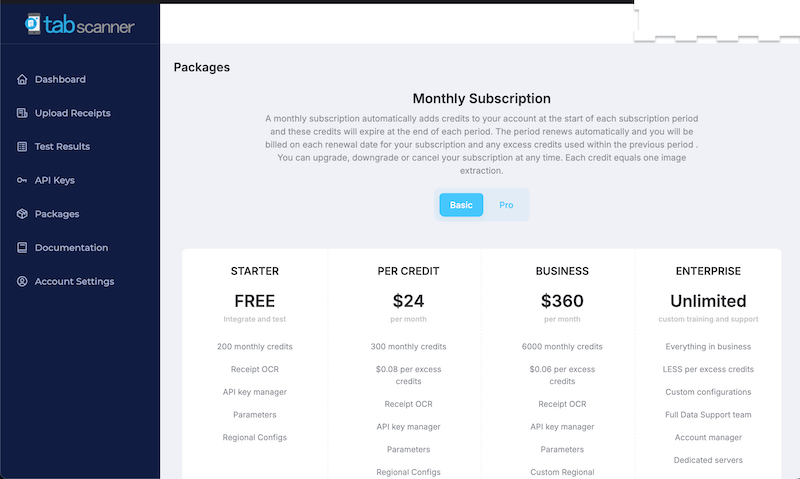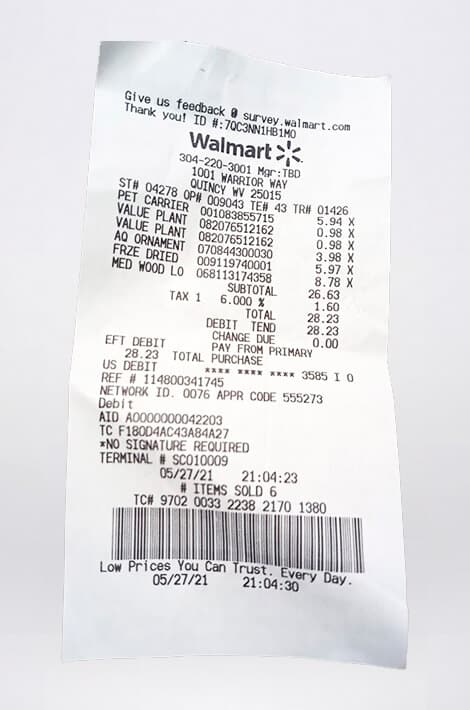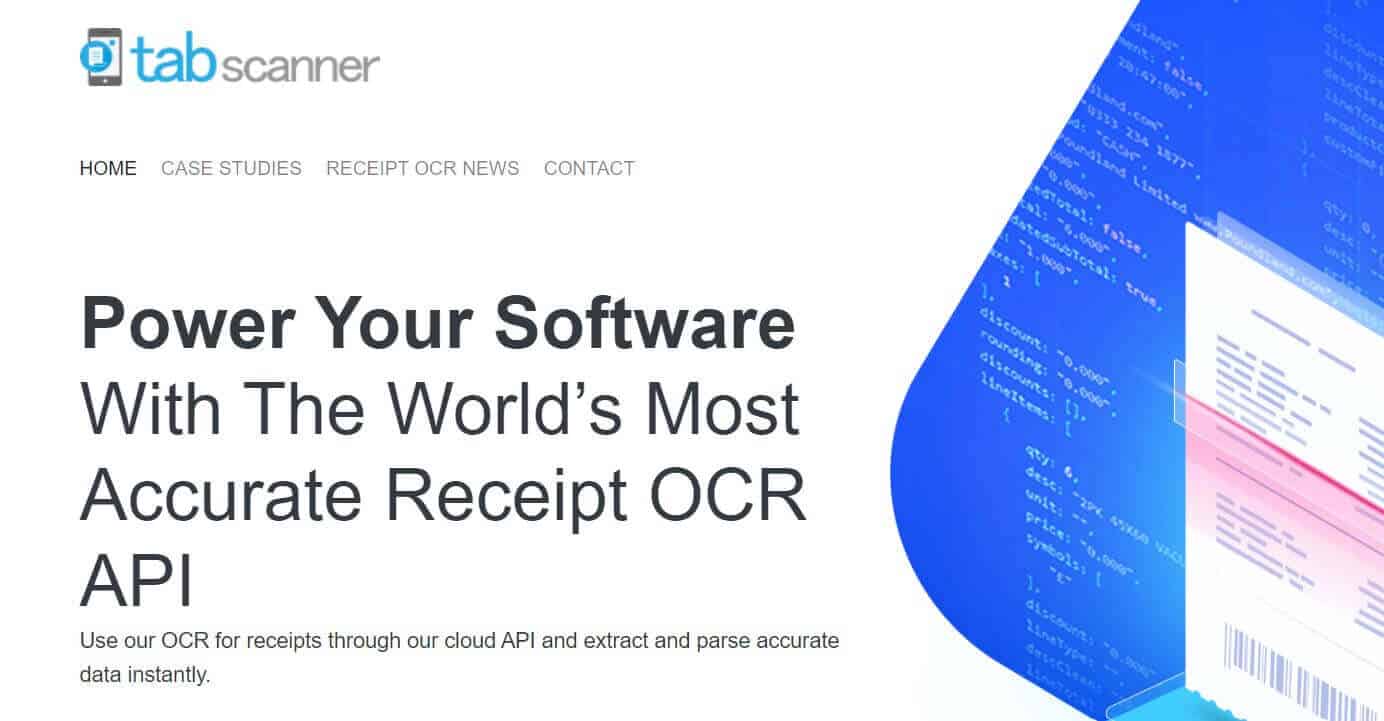Try Tabscanner’s FREE Receipt OCR API
+ Supercharge Your Receipt Scanning Software or App (Updated October 2024)
Our AI receipt scanning API can be used for any reason. Developers choose us for the following reasons:
- Faster and. More Accurate than similar technology.
- Easy to integrate into ANY software or app.
- Developers love our bespoke support with custom configs free on paid plans.
- Our receipt scan technology gathers more data.
- The Starter plan is free forever.
Whether ryou need to manage expenses, scan receipt for a loyalty reward scheme or market reseacrh, or any other use case, the Tabscanner free receipt OCR API Starter plan is the perfect way to test our solution.
Example use case: expense data extraction. Financial astuteness isn’t something that’s advised for businesses. It’s a requisite. Managing your expenses and sales are, arguably, the most important.
From building and evolving your website and social media presences to standard equipment like laptops, phones, even stationary insurance, paid memberships of bodies, premises rental, travel costs the list goes on.
Managing your expenses is critical. Get it wrong and your profits will be eaten into. Get it right and you’ll find yourself on the fast track to building significant retained profit and, of course, long-term success.
The digital age we live in provides plenty of opportunities for businesses to optimise their expense management online. However, if you’re not using a receipt OCR API then you’re making managing your expenses harder. Trust us.
Being Cost-Effective with the World’s Most Accurate Free Receipt OCR API
Okay, so we all know that no matter the size of your business, whether you’re a start-up with a handful of employees or a multi-national organisation with offices across different continents, being cost-effective is paramount. Every business has a budget to work within – even Walmart, Saudi Aramco, Apple, and Google have budgets, they just have different decimal points than smaller start-ups.
Trust us, these businesses leverage cutting-edge digital technology to track and measure financial performance. Spend more than you earn, you won’t have a business for long. Spend less than you need and you’re likely to be overtaken by a competitor who is willing to invest to achieved sustained prosperity.
Now, commercial financial management isn’t something that can be explained in a few paragraphs or so. The topic is simply too broad with more elements than you can think of. Your products or services, your operations, your manpower, your customer retention… the list goes on. However, we can simplify it for you by shining a light on your expenses.
So, let’s look at why you should try a free receipt OCR API to help you manage your expenses.
Wait… Is it Really Free?
Well, yes. Think about any free trails you’ve signed up to, have you ever had access to everything during your free trail? Probably not. However, Tabscanner’s new Starter plan is 100% Free. 200 credits per month with full access to our dashboard.
Tabscanner’s new Starter plan is 100% Free.

We have excellent customer support and access to excellent documentation to help you onboard our AI receipt scanner. Plus YouTube videos to offer more insight into Tabscanner and the technology we have developed since 2016.
Let’s look at a service that most everyone in the world uses today – online streaming. Sign up to a free online trial of any streaming platform and you can get access to some of their catalogue. Not the lot. Maybe they offer you access to everything, but with the annoyance of having to endure sponsored video ads every five minutes when watching content. Is this what you want to do? Most people will say no.
However, free trails (specifically those of software solutions) give customers a taster of what they can expect. Does a typical receipt OCR API for free give you access to all its features. Well, no. What it does offer is for customers to test its features for 30 days and decide if it’s right for them. Once customers understand the benefits, good OCR API software, like Tabscanner, will offer a scalable pricing package that can be tailored to your needs.
Think of it this way, a free package is a taster. Nothing else. You get the chance to sample the service. Now, can you make an informed commercial decision with a sample? Doubtful. As great as a free OCR API can be, to make the right decision you need to have access to those specific features that add value to your business. Signing up to a basic package and then scaling the service according to your usage is better. It’s that simple.
Choose the Right Pricing Package
So, why is having access to scalable cost for your receipt OCR API so important? Well, for starters, you can scale your costs as your business evolves. Premium services might not be for every start-up, but basic paying packages allow you control what you spend – and then you can scale your cost.
Now, here’s a little secret. Most businesses who offer free, silver, gold, and platinum packages (or something similar) tend to offer similar features on their free and silver (basic) price packages – with one difference: basic packages give businesses the chance to really sample how the software can benefit them.
What does this mean? You might as well try the basic package. After all, how can you decide if a software package is right for your business if you don’t have access to ALL the features that will benefit it? That’s like using LinkedIn to upload your CV and nothing else, right?
Tabscanner’s Pricing Packages
Like you might expect Tabscanner offers tiered pricing packages. This have been designed to reflect the business needs of start-ups, SME’s all the way to established multi-national market players. We provide our customers with a choice of service levels – one that reflects their budgets.
We can help you to decide which package suits your commercial needs at a clear price point. There are no hidden costs, no monthly increases, just one simple monthly payment. Contact us if you have any questions about why Tabscanner is the best receipt OCR API and how we can help your business become more efficient.
As the world’s most accurate receipt scanning software able to achieve 98% accuracy on all core data, our prices reflect the software’s performance. We help clients, including, Chevron, ADP, and Fujitsu to discover the right package for their needs, allowing them to seamlessly manage their expenses whilst providing them with essential insights that allow them to strengthen their financials.
Our free packages give clients a taster of how our free OCR API can enrich your business. Try it and then you can choose the package that best meets your commercial needs.





